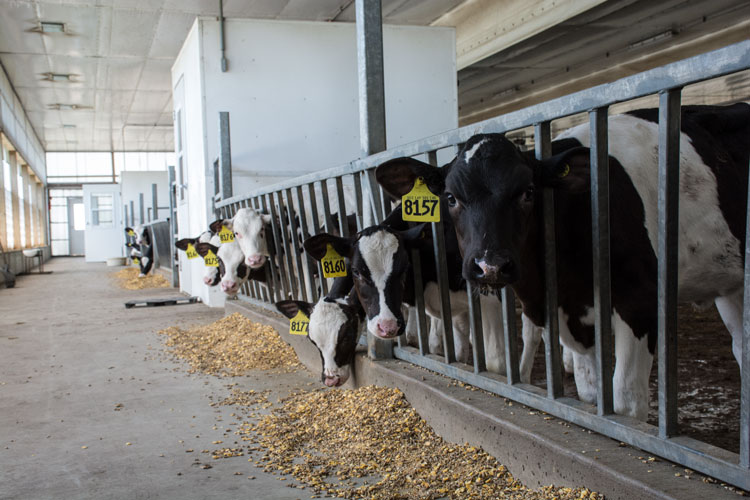
Many farms have invested in facilities designed specifically for heifers, providing a space for these herd replacements to be cared for and grow. Unfortunately, certain barn features that work well for adult cows are creating big lameness problems in heifers on some farms.
At the University of Wisconsin-Extension’s Dairy and Beef Well-being Conference, Nigel Cook, MRCVS, discussed Corkscrew Claw Syndrome, a new lameness concern that is impacting first-lactation cows.
Cook, a professor at the University of Wisconsin-Madison School of Veterinary Medicine, explained that this emerging syndrome affects the inner claw of both front and rear feet. It creates a major mobility issue, and the damage is often done during the heifer stage.
“Once this damage happens during the heifer rearing period, it’s permanent,” Cook said. “There is no fixing this.”
One risk factor is freestall housing, especially on farms using recycled sand for bedding. “Sand bedding is great for adult cows, but it creates challenges for heifers, particularly recycled sand,” Cook said.
Headlocks can be another contributor to the syndrome. Once again, Cook recognized the benefit headlocks provide for managing the milking herd. However, when heifers eat in headlocks, they often push their neck into the rail, creating tremendous force on their front and rear feet and legs.
Also related to headlocks is a tendency for overcrowding in heifer barns, along with limit-fed rations, which can lead to competition and pushing at the feedbunk. Large grooves on concrete floors can also be a trouble area for heifers, especially in the feeding area.
In addition, Cook shared some hoof trimming practices that could make the syndrome worse, such as removing too much of the sole.
What can be done to mediate some of these trouble spots for heifers? Cook offered the following recommendations:
- Continue to use deep bedding, but consider another source, such as recycled manure solids.
- Limit headlocks to the breeding pen, and utilize post and rail feeding whenever possible. Consider working heifers using a cattle chute instead.
- Create smaller grooves in the concrete or add rubber flooring at the feedbunk. Provide dry lot or pasture access if possible.
- Feed to a greater refusal rate, push feed up frequently, and add straw to extend the ration. Cook noted that while these feeding changes will help, they alone will not reverse the problem of Corkscrew Claw Syndrome.
- Work with your hoof trimmer to make sure they know how to treat affected animals.







